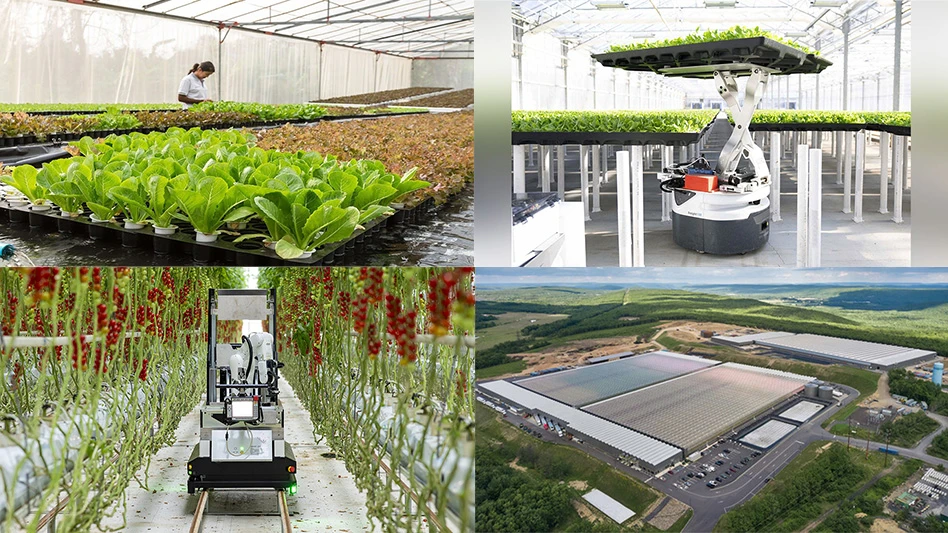 The Food Safety Modernization Act (FSMA) has raised concerns among growers about whether their practices sufficiently meet the new food safety requirements. While some small growers are exempt from the act, many greenhouse growers are facing the same challenges as field growers and need to be up to speed on current food safety regulations, specifically the Food Safety Modernization Act.
The Food Safety Modernization Act (FSMA) has raised concerns among growers about whether their practices sufficiently meet the new food safety requirements. While some small growers are exempt from the act, many greenhouse growers are facing the same challenges as field growers and need to be up to speed on current food safety regulations, specifically the Food Safety Modernization Act.
Greenhouses are considered controlled environments, but there are still several sanitation steps that need to be taken to ensure edibles meet food safety requirements. From seed to shipment, every step of the growing cycle needs to be analyzed for potential food safety risks. Based on this risk analysis, growers should implement these measures to reduce contamination issues later in the growing process.
Document each and every consecutive step in the process. If you are looking for a place to start, consult a fellow grower or check the Internet for some food safety program examples. Your plan should consist of cleaning and sanitation processes, water treatment requirements, pest control measures, visitor regulations, packing requirements, monitoring and testing measures, and a training schedule for others working in the greenhouse.
Establish cleaning and sanitation as the cornerstones of your food safety program. Sanitation is important, but it should be noted that cleaning beforehand can significantly help decrease outbreaks. Anyone who will come in contact with food crops must take the necessary measures to prevent contamination. You should establish personal sanitation requirements and facility sanitation requirements for your greenhouse. While many growers are accustomed to only cleaning and sanitizing their greenhouses in between crop cycles, it is imperative that sanitation occurs on a daily basis in areas where edibles are harvested and packed. Growers need to instill a zero-tolerance policy when it comes to lax cleaning practices by employees. It is essential to sanitize tools, equipment, and structures, while making sure people are taking sanitation measures as well. Peroxycompounds (hydrogen peroxide and peroxyacetic acid), percarbonates, copper, and chlorine have all proven effective for greenhouse sanitation, though it is important to note some chemistries don’t kill spores and are harmful for the worker and environment. It is also important for your sanitation chemicals to have minimal REI or 0 to ensure no delays in production.
Make water treatment a priority. Water treatment is one of the most important steps in meeting food safety regulations. All water that comes in contact with food crops should be tested and treated to prevent contamination. Untreated water is one of the most common sources of plant pathogens, especially if your irrigation water is stored in a shallow well, tank, or pond. In these cases, it needs to be treated with antimicrobial chemicals before being used to irrigate or sanitize crops. Activated peroxygen chemistries have been researched extensively and deemed a very effective and sustainable solution for treating water. Some other options include copper ionization, chlorine, and ozone.
Wash always. Produce should be washed well before packaging to get rid of any lingering pathogens. Use an antimicrobial treatment that is EPA approved and does not require a water rinse, whenever possible. This will help prevent potential food safety issues and spoilage during travel.
 Establish regular monitoring and testing of irrigation water. Testing should be done at least quarterly to provide you with a solid baseline of water quality. Keep all results and review them often to monitor changes and patterns. Also, keep records of all sanitation and pest management programs. These should be done on a weekly basis, if possible. Make sure you are also testing your produce wash and sanitation treatment levels. It is critical that your measurements of these chemical levels is accurate, so using a tester that records levels is recommended over test strips, which are subjective and much less accurate. Some chemical producers and greenhouse supply companies offer water testing services to help you establish a treatment plan. They may also be able to recommend or provide you with the necessary testing equipment to continue the practice on your own.
Establish regular monitoring and testing of irrigation water. Testing should be done at least quarterly to provide you with a solid baseline of water quality. Keep all results and review them often to monitor changes and patterns. Also, keep records of all sanitation and pest management programs. These should be done on a weekly basis, if possible. Make sure you are also testing your produce wash and sanitation treatment levels. It is critical that your measurements of these chemical levels is accurate, so using a tester that records levels is recommended over test strips, which are subjective and much less accurate. Some chemical producers and greenhouse supply companies offer water testing services to help you establish a treatment plan. They may also be able to recommend or provide you with the necessary testing equipment to continue the practice on your own.
Prohibit rodents and birds. While these may not be as common in greenhouses as they are in the field, they can still find their way into your structure and spread disease. Create a plan to prevent these pests from entering your growing area. Also, establish a way to get rid of them in case they gain access. Pests should be kept out of any area where crops are grown, packed, or handled to prevent contamination. Screening windows and doors and setting traps are good ways to prevent birds and rodents from getting into the greenhouse.
And insects, too. Insects can be an even larger problem than birds and rodents. No insects should be found in growing or packing areas. Obviously, it can be difficult to completely prevent insects as they can easily enter when doors or vents are open, but do your best to keep populations low.
A quality sanitation program will greatly reduce the number of insects inside your growing and packing spaces. It is also recommended to use insect growth regulators to reduce activity. Azadirachtin-based products are very effective, and some are organic listed.
Azadirachtin-based insecticides can be used to suppress larval and nymph stages of insects, but it is important to look for products that have some anti-feedant capabilities to help suppress insects that have some contact with the plants. Not all azadirachtin products are the same. It is not recommended to use products with a glycogen base, because over time, unwanted pests will recognize the glycogen as a food source, which will help save your crops.
Start a training program. This is a great way to make sure everyone is on the same page with your food safety program. Regardless of the size of your operation, all employees should share the mentality that food safety is critical to a successful business. Proper training of your entire team, rather than merely those who come in constant contact with crops, will help prevent any unnecessary contamination or exposure to pathogens.
Make sure your team understands the basics and importance of food safety regulation so they can develop good practices on their own instead of only following the regulations you put in place. You should encourage employees, when sick, to stay home or away from the produce.These are the main aspects that should be included in your food safety program.
You may also want to add other aspects concerning packaging material’s need to be unused and sanitary and that recycled cardboard and plastics need to be avoided. Another area of concern should be keeping visitors and vendors away from growing and packing areas. While the new regulations in food safety can seem numerous and overwhelming, making changes in your operation that will stay in place permanently can help you meet all the requirements and offer healthy, fresh produce to boost your business. Taking the time and effort to write a detailed plan of action will ensure your produce is high quality and safe for consumption for years to come. Restaurants and retailers will want to work with growers who take the time to produce crops that meet all regulations and are always safe and fresh. Well-documented and well-executed food safety procedures will allow you to offer the best and safest products possible.
Rob Larose is president and CEO at BioSafe Systems, www.biosafesystems.com

Explore the April 2014 Issue
Check out more from this issue and find your next story to read.
Latest from Produce Grower
- AeroFarms reveals patented technology for microgreen production, prompting talk of expansion
- Cox Farms partners with Feeding America to tackle food insecurity
- Ethical labor practices supported by third-party certification programs
- Spotlight on strawberry production
- Relationship building
- Growing small to trial leafy greens
- IFPA expands team, launches strategic plan
- Downy mildew





